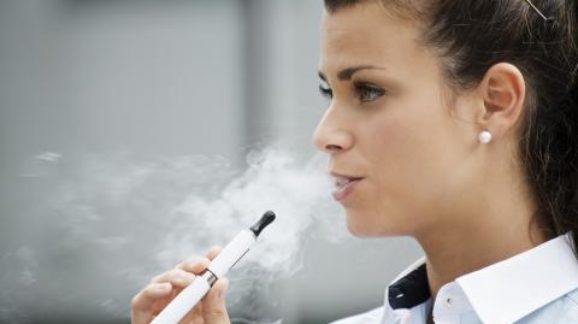FDA Created the Youth Vaping Epidemic, Now It’s Doubling Down

 E-cigarettes pose less risk than smoking. The science is clear: while cigarettes kill about half their users, e-cigarettes have perhaps five percent of the risk. Therefore, e-cigarettes have the ability to save the lives of those smokers who switch to vaping. Yet, the U.S. Food and Drug Administration (FDA) is trying to eradicate e-cigarettes, a move that would sacrifice smoker lives and squander one of the greatest public health opportunities of our generation.
E-cigarettes pose less risk than smoking. The science is clear: while cigarettes kill about half their users, e-cigarettes have perhaps five percent of the risk. Therefore, e-cigarettes have the ability to save the lives of those smokers who switch to vaping. Yet, the U.S. Food and Drug Administration (FDA) is trying to eradicate e-cigarettes, a move that would sacrifice smoker lives and squander one of the greatest public health opportunities of our generation.
Why? Regulators say they are concerned about a recent uptick in youth vaping. The irony is it was probably the FDA that helped inspire an uptick in youth vaping. But now the agency is doubling down on bad policies.
Experts disagree over how much safer e-cigarettes are compared to combustible cigarettes, but no credible expert disputes the fact that e-cigarettes are safer. Of course, in addition to smokers, some never-smokers choose to take up vaping. Presently, there are eleven million adult e-cigarette users in the United States. A small portion, around one percent, are “never smokers.” For some anti-nicotine zealots, this small group of people who might slightly increase their health risks by vaping matter more than the smokers whose lives might be saved by vaping. We can now count the FDA among those zealots.
The FDA recently announced plans to alter the way it regulates e-cigarettes. First, by banning all e-cigarette flavors (apart from tobacco, menthol, and mint) and also cutting a year off the time e-cigarette manufacturers had to file applications with the FDA for approval to sell their products. As CEI noted in public comments to FDA, both changes would eliminate most e-cigarettes from the market and reduce the ability of smokers to find a satisfying, effective, and safer alternative to deadly cigarettes.
The justification FDA gives for the proposed changes is the most recent National Youth Tobacco Survey, which found a significant increase in past-month use of e-cigarettes among middle and high school students. CEI shares the FDA’s concern about this development. Unfortunately, the proposed solution ignores the real possibility that the uptick in youth vaping was caused by the FDA itself, along with other health agencies.
Many well-meaning public health campaigns backfire, actually causing the opposite of their intended effect. Take the “My Anti-Drug” campaign, a national marketing effort was meant to reduce teen drug use. A Government Accountability Office study found that it was ineffective and, worse, counterproductive—actually increasing youth drug use.
The reason this sort of public health communication campaign backfires, according to developmental psychologists, is often because they trigger something called “psychological reactance.” In layman’s terms, reactance is caused when persuasive communication, such as forbidding certain behaviors, is perceived by recipients of the messaging as a threat to personal freedom. When that happens, the person will try to reassert their autonomy, most often by engaging in the forbidden behavior. Adolescents are particularly prone to this type of reaction because of their increasing desire for independence, individuality, and disavowal of authority.
If you wanted to design a campaign to provoke teen defiance, you couldn’t do much better than what FDA, Centers for Disease Control, and other health groups have been doing over the last two years.
For two years, anti-vaping messages have flooded the airwaves, social media, and the news. Most of these, like the FDA-funded commercial, “An Epidemic is Spreading,” focused attention on the fact that youth vaping is a wide-spread problem. Though the FDA ad is meant to convey that this “epidemic” is a bad thing and teens shouldn’t vape, what it actually implies is that teen vaping is normal. Thus, it unintentionally communicates that teens should vape if they want to fit in with their peer group.
Commercials produced by the California Tobacco Control Program tell viewers not only that teen vaping is normal, but also that those teens who do vape are popular. “The people that I know that [vape], they’re like good students—like straight As. It’s a normal thing to do,” a young woman says in the ad. Later she describes how teen e-cigarette users post videos of themselves vaping on Snapchat stories and Instagram, noting that they “tend to be more popular” implying that vaping contributes to popularity. “If you don’t vape you’re looked at as an outsider,” a young man in the same video claims. “So, everybody does it,” he concludes.
If you wanted to make a commercial designed to make teenagers feel like they are being infantilized, you couldn’t do much better than the Truth Initiative’s advertising campaign titled “Am I a Puppet?” This series of anti-vaping ads feature Sesame Street-like puppets playing the role of teens as they espouse the dangers of e-cigarettes. These ads are likely to make young adults feel infantilized—that the organization sees them as little kids—and cause them to reject the message and possibly do the opposite of what it recommends.
There are other aspects of the FDA’s anti-vaping efforts that likely backfired and made vaping more attractive to teens. Along with anti-vaping commercials, FDA and other health agencies have also made an effort to encourage parents and school officials to take action against teen use of e-cigarettes. This has gone so far as to include removing stall doors in bathrooms at high schools to discourage discreet vaping. Such action would almost certainly be viewed by students as a threat to their freedom (and privacy). Some, perhaps, sought to reclaim their own sense of adulthood and autonomy by vaping in rebellion.
The FDA’s proposed flavor ban and shortening of approval timelines will ultimately make it harder for adult smokers to switch and stick to vaping. But it won’t do anything to stop teens from experimenting with e-cigarettes. That’s because it doesn’t address the cause of the recent increase in youth vaping: FDA and other health groups’ incessant and unscientific war against e-cigarettes.